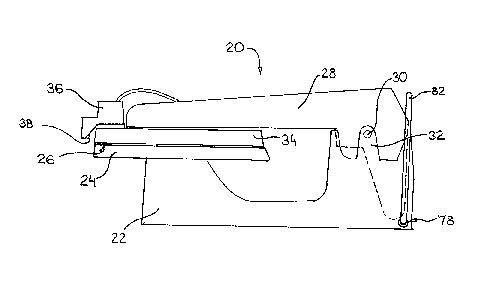Some of the information on this Web page has been provided by external sources. The Government of Canada is not responsible for the accuracy, reliability or currency of the information supplied by external sources. Users wishing to rely upon this information should consult directly with the source of the information. Content provided by external sources is not subject to official languages, privacy and accessibility requirements.
Any discrepancies in the text and image of the Claims and Abstract are due to differing posting times. Text of the Claims and Abstract are posted:
| (12) Patent Application: | (11) CA 2194813 |
|---|---|
| (54) English Title: | POWER PRESS |
| (54) French Title: | PRESSE HYDRAULIQUE |
| Status: | Deemed Abandoned and Beyond the Period of Reinstatement - Pending Response to Notice of Disregarded Communication |
| (51) International Patent Classification (IPC): |
|
|---|---|
| (72) Inventors : |
|
| (73) Owners : |
|
| (71) Applicants : |
|
| (74) Agent: | GOWLING WLG (CANADA) LLP |
| (74) Associate agent: | |
| (45) Issued: | |
| (22) Filed Date: | 1997-01-10 |
| (41) Open to Public Inspection: | 1998-07-10 |
| Availability of licence: | N/A |
| Dedicated to the Public: | N/A |
| (25) Language of filing: | English |
| Patent Cooperation Treaty (PCT): | No |
|---|
| (30) Application Priority Data: | None |
|---|
A power press having a press bed and lower ironing panel
secured to the press bed and including a generally horizontal upper face. A
press arm is pivotably mounted to the press bed. An upper press soleplate is
secured to the press arm and is movable with the press arm between closed
and open positions. A spraying device responsive to movement of the press
arm is further provided. A motor driven activator acts between the press bed
and the press arm to move the press arm and in turn the upper press
soleplate between the open and closed positions.
Presse hydraulique ayant une table de presse et un panneau inférieur de nivelage fixé à la table et comprenant une face supérieure généralement horizontale. Un bras de presse est monté sur la table de presse de manière à pouvoir pivoter. Une semelle de presse supérieure est fixée au bras de presse et peut se déplacer avec lui entre une position fermée et une position ouverte. Il y a aussi un dispositif de pulvérisation réagissant au mouvement du bras de presse. Un actionneur motorisé agit entre la table de presse et le bras de presse pour déplacer le bras de presse et la semelle de presse supérieure entre une position ouverte et une position fermée.
Note: Claims are shown in the official language in which they were submitted.
Note: Descriptions are shown in the official language in which they were submitted.

2024-08-01:As part of the Next Generation Patents (NGP) transition, the Canadian Patents Database (CPD) now contains a more detailed Event History, which replicates the Event Log of our new back-office solution.
Please note that "Inactive:" events refers to events no longer in use in our new back-office solution.
For a clearer understanding of the status of the application/patent presented on this page, the site Disclaimer , as well as the definitions for Patent , Event History , Maintenance Fee and Payment History should be consulted.
| Description | Date |
|---|---|
| Inactive: IPC from MCD | 2006-03-12 |
| Time Limit for Reversal Expired | 2000-01-10 |
| Application Not Reinstated by Deadline | 2000-01-10 |
| Inactive: Cover page published | 1999-10-01 |
| Deemed Abandoned - Failure to Respond to Maintenance Fee Notice | 1999-01-11 |
| Application Published (Open to Public Inspection) | 1998-07-10 |
| Abandonment Date | Reason | Reinstatement Date |
|---|---|---|
| 1999-01-11 |
Note: Records showing the ownership history in alphabetical order.
| Current Owners on Record |
|---|
| SINGER COMPANY N.V. (THE) |
| Past Owners on Record |
|---|
| FRANCIS LO |